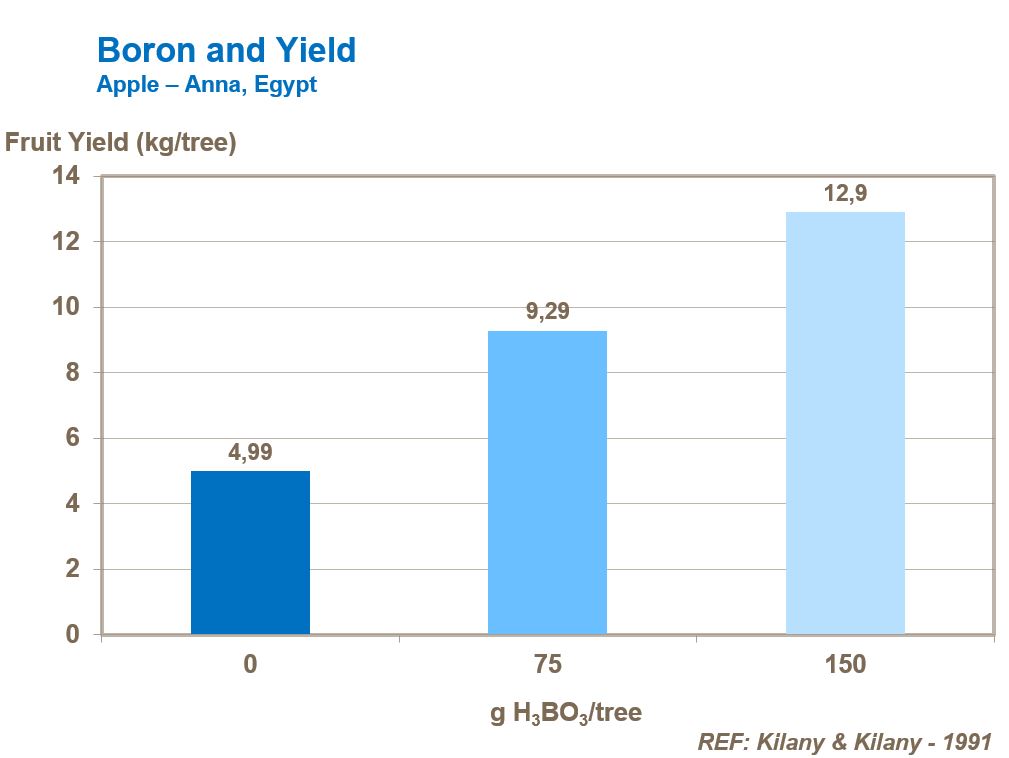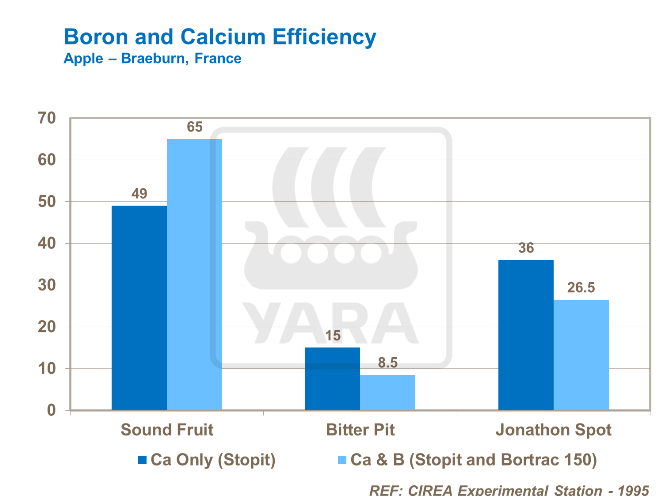Role of Boron in Pome Fruit Production
Boron is involved in cell wall formation, stabilization and lignification, and xylem differentiation.
It is needed to ensure normal development of new tissues from roots to flowers and fruit. Boron is responsible for pollen germination and pollen tube formation and activation. Thus, poor boron supply results in poor flower and fruit formation. In severe cases it causes ‘blossom blast’ where flowers dry out and are shriveled at bloom.
| Stage | Boron effect |
| Bud Burst - Start of Flowering | Maximize pollination and strong flower development |
| Fruit Set to Fruitlet at 30 mm | Improve fruit set |
| Post Harvest | Replenish reserves and strengthen new buds |
General Guidelines for Boron Application
Of the micronutrients, boron is needed in greatest amounts both in the fruit and leaf, but there is a relatively narrow margin between deficiency and toxicity.
Where soil analysis identifies a need, soil applications should be used to meet tree needs. But, because boron is not readily translocated within the tree, it is most critically used as foliar applications targeted at key periods of flower and fruit formation so as to maintain flower set and fruit quality.
Boron Deficiencies in Apples
Symptoms are frequently found in the fruit with little sign of deficiency in the leaves unless the deficiency is severe. The most common symptom in apples is small, clear, water-soaked areas in the flesh of the fruit. These may dry out, turn brown and leave spongy lesions in the fruit. In some cases, deep cracks in the skin may occur. The skin is rough and heavily russetted.
When boron deficiency occurs in combination with a lack of calcium, the fruit is of poor storage quality and bitter pit is more common. In severe cases, dead areas appear on the bark of young branches (apple measles). Boron toxicity results in chlorosis of leaf margins and tips, followed by necrosis. In fruit, high levels lead to a reduction in storage quality – fruit softening.

























































